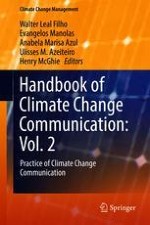2018 | OriginalPaper | Buchkapitel
The Klimablog www.cambioclimatico-bolivia.org: Personal Reflections After 5 Years of Blogging on Climate Change from, for and About Bolivia
verfasst von : Dirk Hoffmann
Erschienen in: Handbook of Climate Change Communication: Vol. 2
Aktivieren Sie unsere intelligente Suche, um passende Fachinhalte oder Patente zu finden.
Wählen Sie Textabschnitte aus um mit Künstlicher Intelligenz passenden Patente zu finden. powered by
Markieren Sie Textabschnitte, um KI-gestützt weitere passende Inhalte zu finden. powered by
